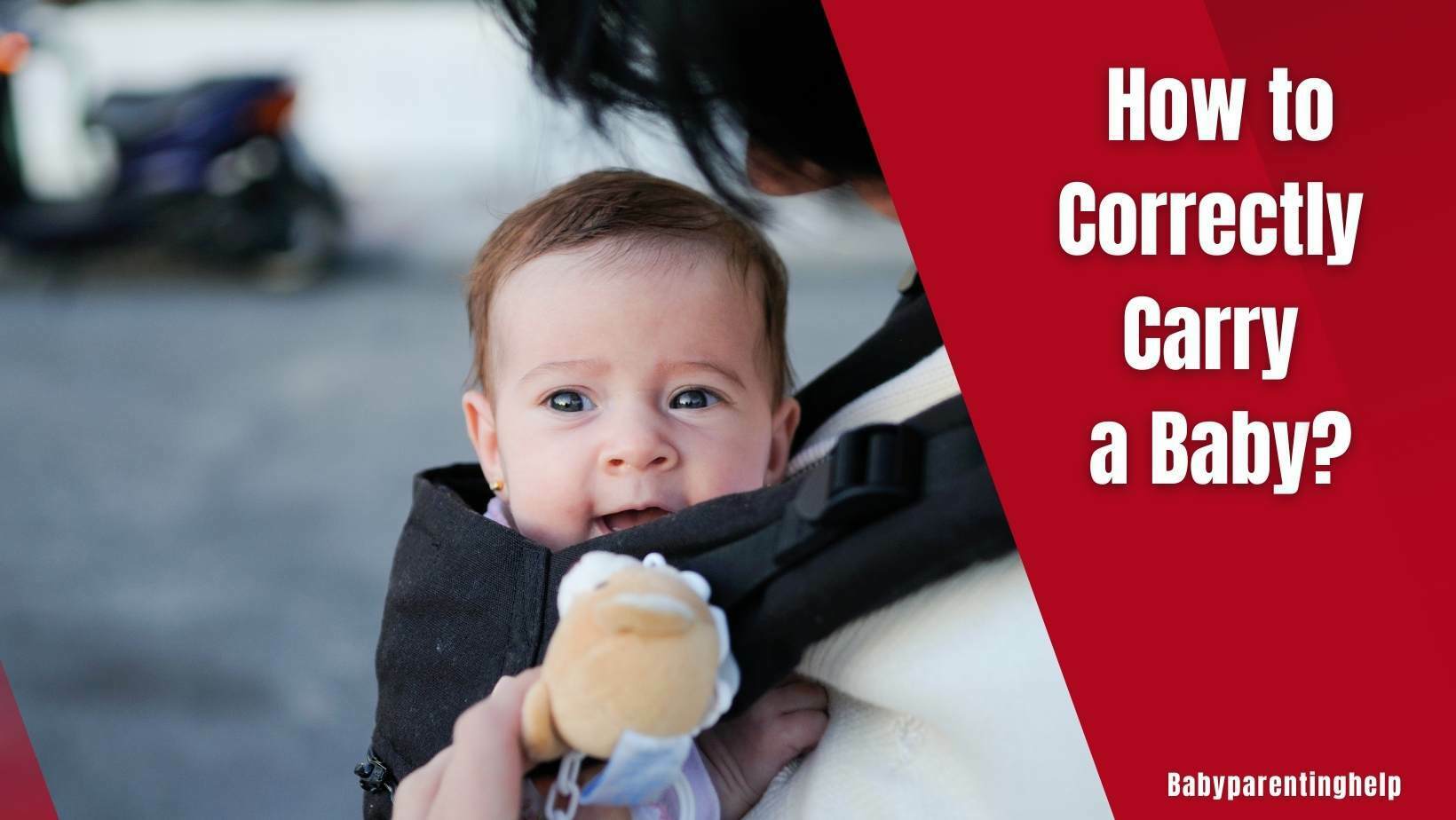Becoming a parent is a wonderful journey filled with love and joy. However, it also comes with great responsibility, especially when caring for your newborn. One of the essential skills every parent should learn is how to carry their baby correctly. In this article, we will guide you through the proper techniques and precautions to ensure the safety and comfort of your little one.
Contents
- 1 The Importance of Proper Baby Carrying
- 2 Choosing the Right Baby Carrier
- 3 Positioning and Alignment
- 4 Supporting the Neck and Head
- 5 Maintaining Close Physical Contact
- 6 Moving and Walking Safely
- 7 Adapting to Your Baby’s Developmental Stages
- 8 8. Babywearing Benefits for Both Parent and Baby
- 9 Common Mistakes to Avoid
- 10 Conclusion
- 11 (Frequently Asked Questions)
The Importance of Proper Baby Carrying
Carrying your baby correctly is crucial for their physical and emotional development. It promotes bonding between parent and child, provides a sense of security, and aids in the baby’s overall well-being. Additionally, proper baby-carrying techniques ensure the baby’s safety and prevent discomfort or injuries.
Choosing the Right Baby Carrier
Before diving into the techniques, selecting the appropriate baby carrier for you and your baby’s needs is essential. Various pages, such as wraps, slings, mei tais, and structured pages, are available. When choosing, consider factors like comfort, ease of use, and safety features.
Positioning and Alignment
Holding a Newborn
When carrying a newborn, you should aim for a position that mimics their prenatal environment. Supporting their head and neck is crucial, as they lack the muscle control to do so themselves. Here are a few recommended holds for newborns:
Cradle Hold
In the cradle hold, gently cradle your baby’s head in the crook of your arm. Use the other arm to support their back and bottom. Ensure their neck and head are well-supported, preventing strain or jerking motions.
Football Hold
The football hold involves placing the baby on their side, tucked under your arm, with their head resting on your hand. This position is especially useful for breastfeeding mothers or babies who prefer a more upright position.
Upright Hold
As your baby grows, they will begin to enjoy more upright positions. Hold them against your chest, with their head resting on your shoulder. Support their bottom with one hand and their head with the other, ensuring their airways remain clear.
Supporting the Neck and Head
Supporting your baby’s neck and head is crucial until they develop sufficient muscle control. Always ensure their head is aligned with their body and not flopping forward or backward. Use your hand or forearm to provide gentle support, especially when carrying a newborn or when the baby is upright.
Maintaining Close Physical Contact
Babies thrive on physical contact and closeness to their parents. When carrying your baby, keep them close to your body to provide a sense of security and warmth. This physical closeness also allows you to monitor their well-being better and respond to their needs promptly.
Moving and Walking Safely
Maintaining a stable and balanced posture when walking or moving with your baby. Take small steps and avoid sudden movements that jolt or shake the baby. Be mindful of your surroundings, especially when navigating crowded areas or stairs. Consider using a baby carrier with proper back support to distribute the weight evenly.
Adapting to Your Baby’s Developmental Stages
As your baby grows and develops, their carrying needs will change. Here are some tips for different stages:
Carrying an Infant
Infants require more support, especially for their necks and head. Opt for carriers that provide excellent neck and head support, such as wraps or structured carriers with infant inserts.
Carrying a Toddler
Toddlers have excellent neck and head control. You can transition to carriers that allow a more upright position, such as soft-structured carriers or mei tais. However, always ensure their airways remain clear and their posture is supported.
8. Babywearing Benefits for Both Parent and Baby
Babywearing offers numerous benefits for both the parent and the baby. It promotes bonding, enhances cognitive development, regulates the baby’s body temperature, and provides convenience for parents. It also allows parents to engage in daily activities while keeping their baby close.
Common Mistakes to Avoid
While carrying a baby, it’s essential to be aware of common mistakes and take steps to avoid them. Some common errors include using carriers with incorrect positioning, insufficient neck support, or loose straps. Always read the instructions provided by the manufacturer and seek guidance if needed.
Conclusion
Mastering correctly carrying a baby is a valuable skill for every parent. By following the proper techniques and guidelines outlined in this article, you can ensure your baby’s safety, comfort, and overall well-being. Remember to choose a suitable carrier, provide adequate support for the neck and head, and maintain close physical contact. Embrace the joy of babywearing and create a strong bond with your little one.
(Frequently Asked Questions)
Q: Can I carry my baby in any carrier?
A: Choosing a carrier suitable for your baby’s age and developmental stage is crucial. Ensure the airline provides adequate support and is ergonomically designed.
Q: Are there any age restrictions for babywearing?
A: Babywearing can be done from birth until your child feels comfortable being carried. Always follow the manufacturer’s guidelines for weight and age recommendations.
Q: Is babywearing safe for my baby’s hips?
A: When using a carrier that supports the natural “M” position, babywearing is safe for your baby’s hip development.
Q: Can babywearing help soothe a fussy baby?
A: Yes, the close physical contact and gentle motion of babywearing can often help calm and soothe a fussy baby.
Q: How long can I carry my baby in a carrier?
A: The duration of carrying will depend on your baby’s comfort and your physical capabilities. Take breaks as needed and listen to your body and baby’s cues.

I am an accomplished writer, a devoted father, and a compassionate advocate for new and experienced parents in my baby’s parenting journey. With a wealth of firsthand experience and a deep understanding of the joys and challenges of raising children, I become a trusted voice in the parenting community.


